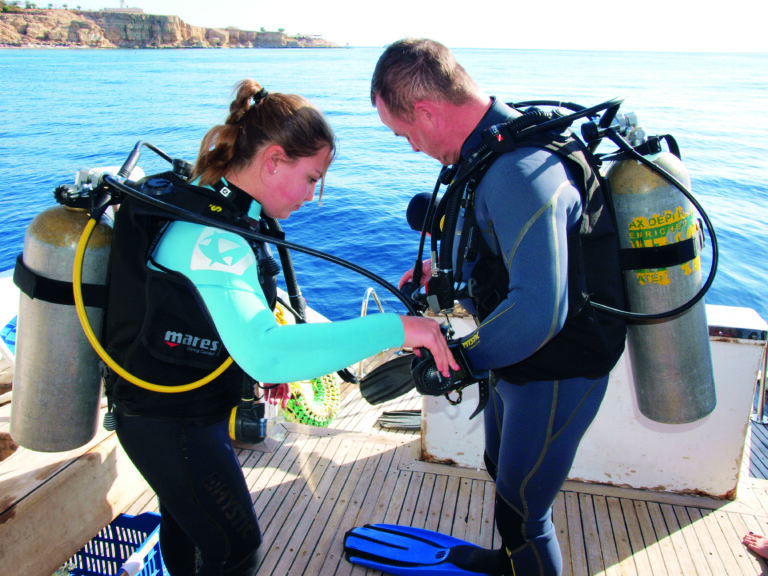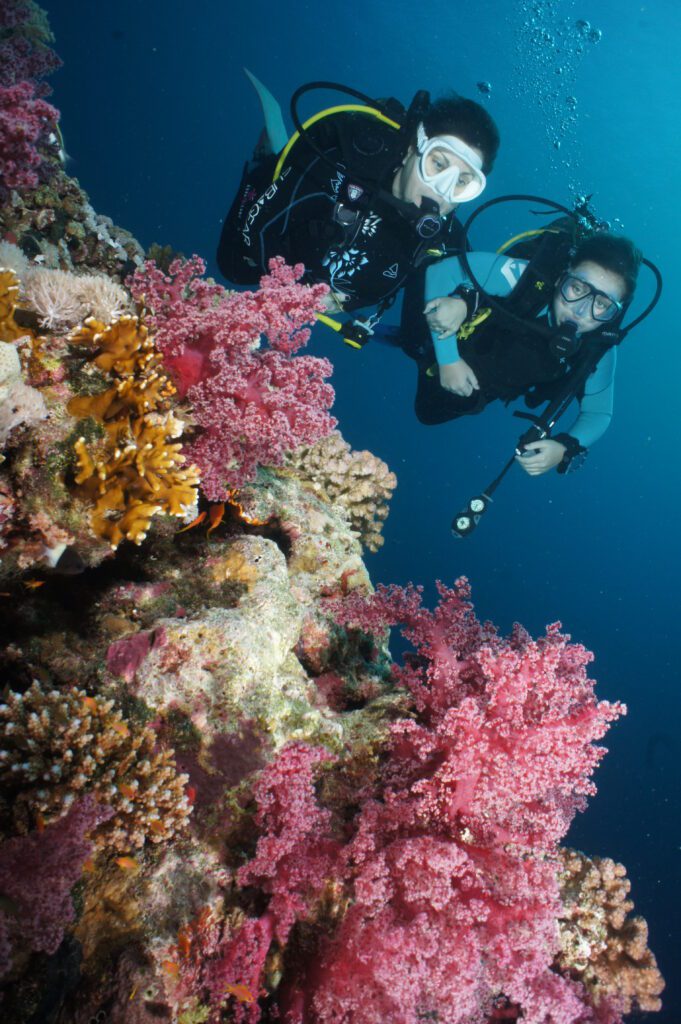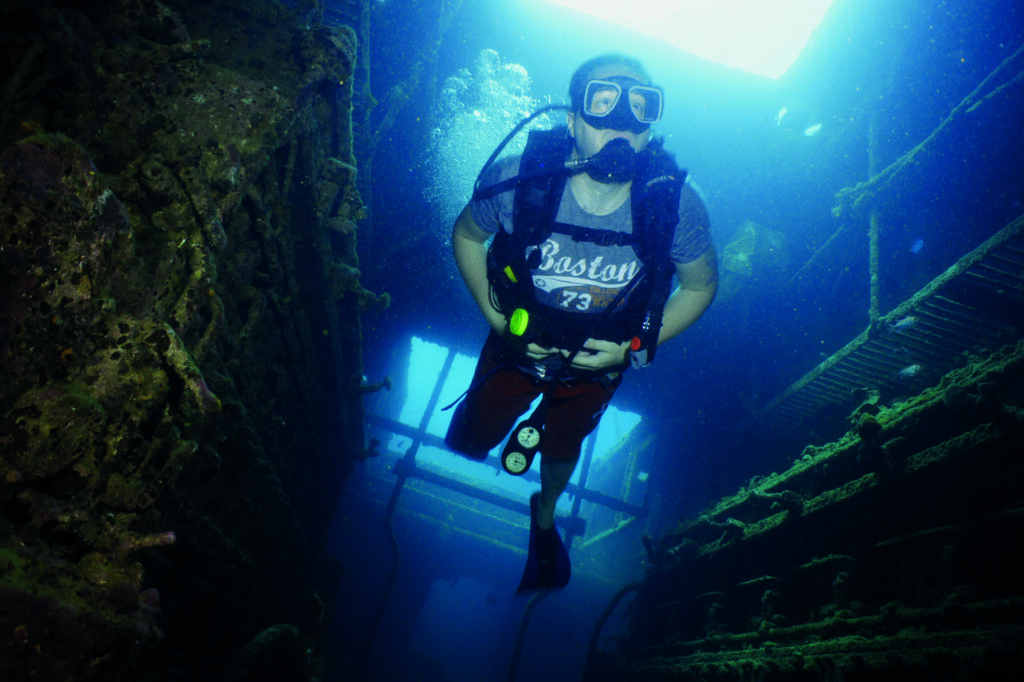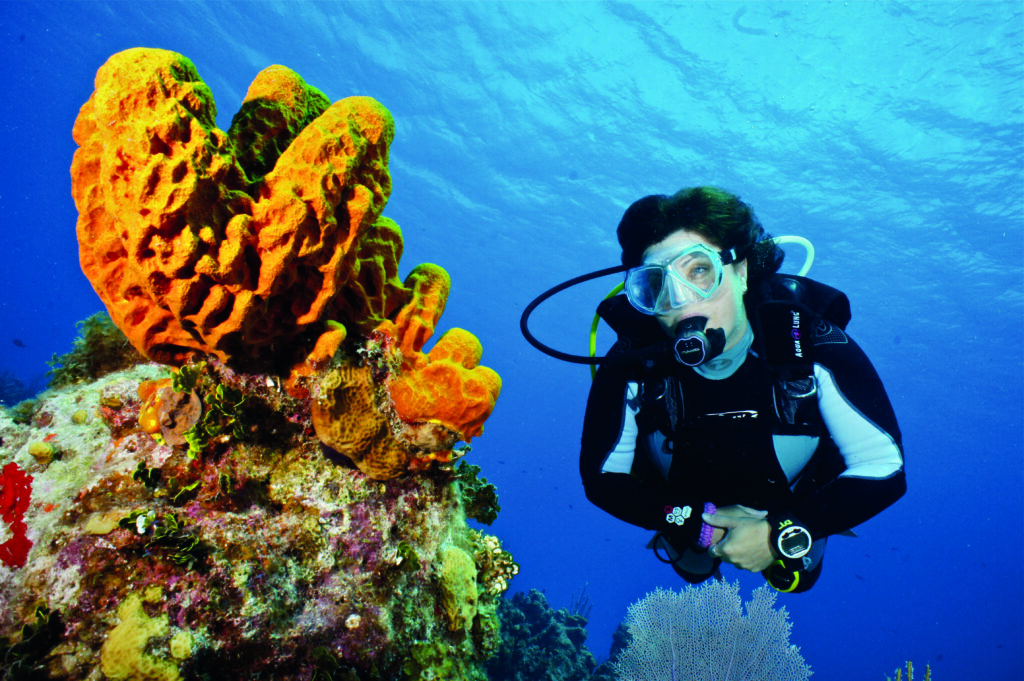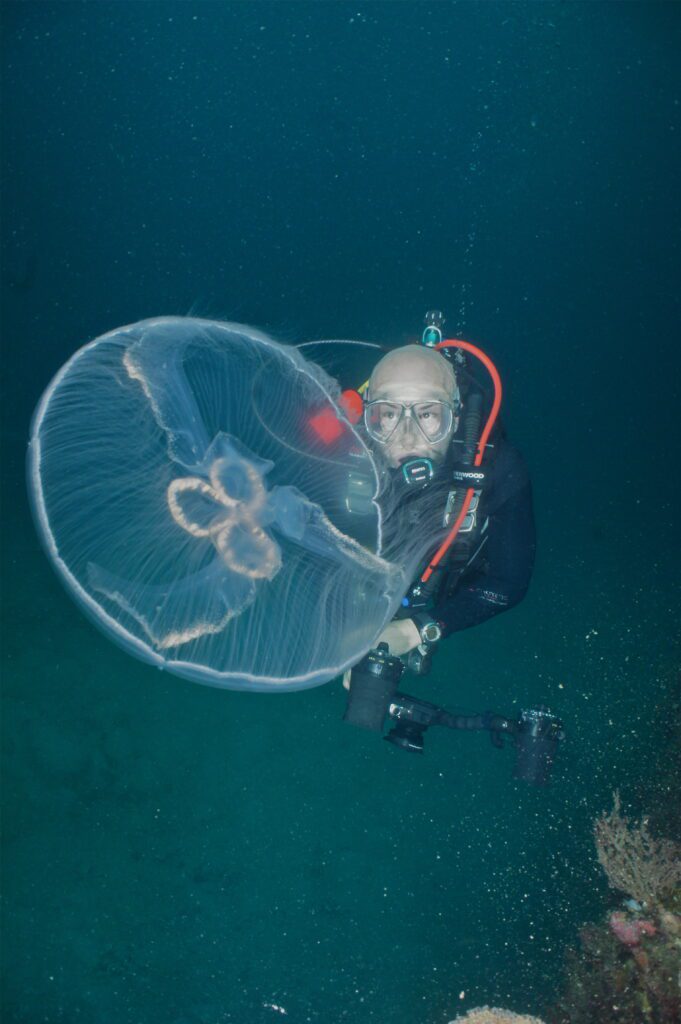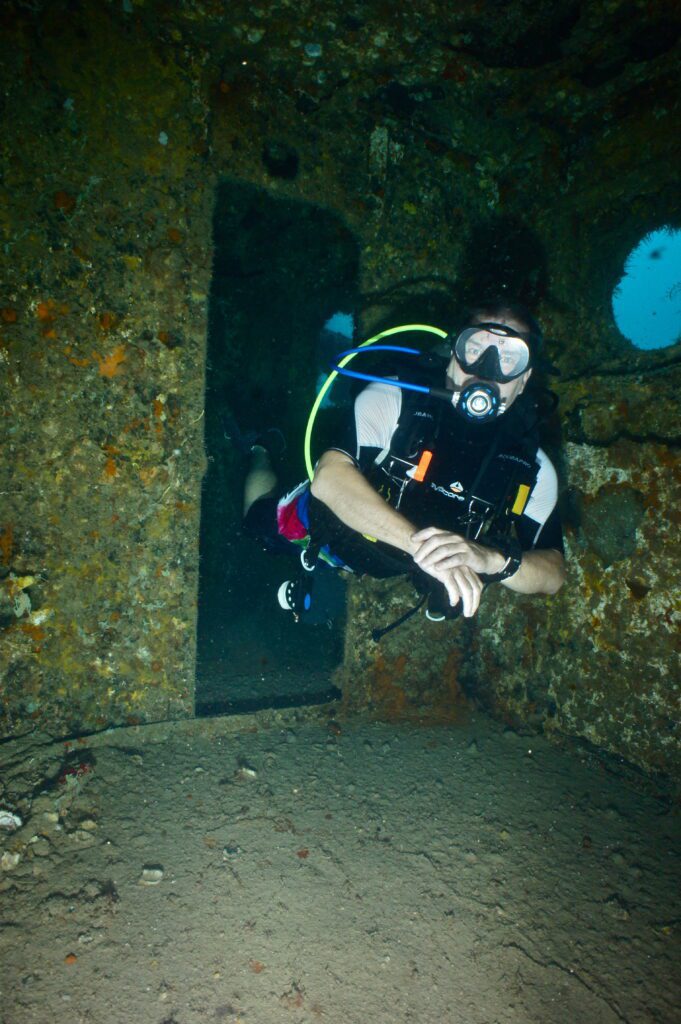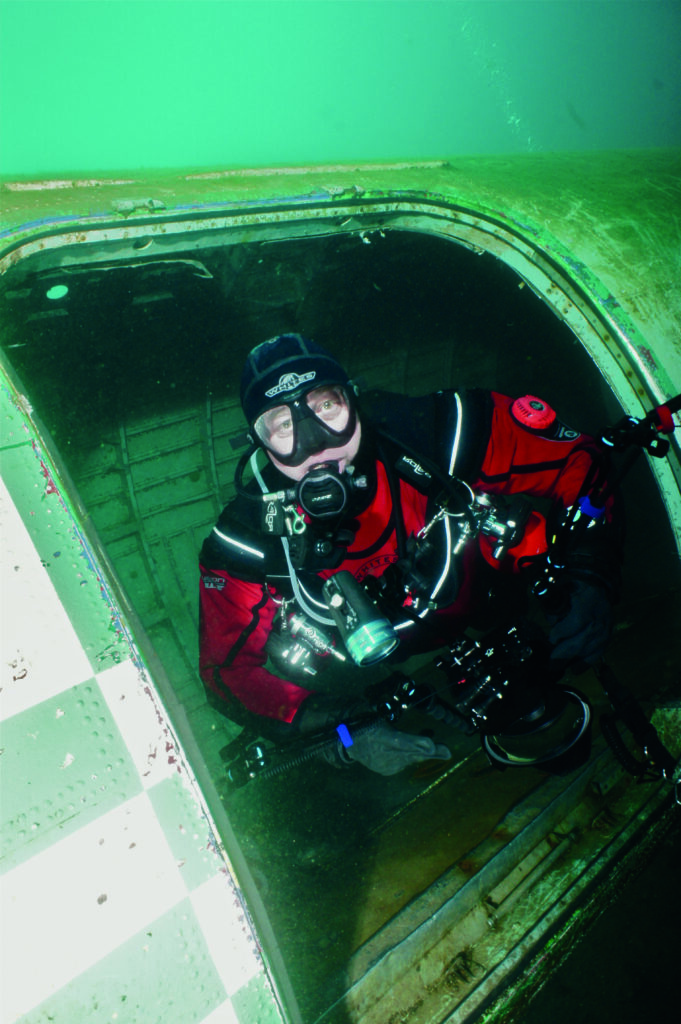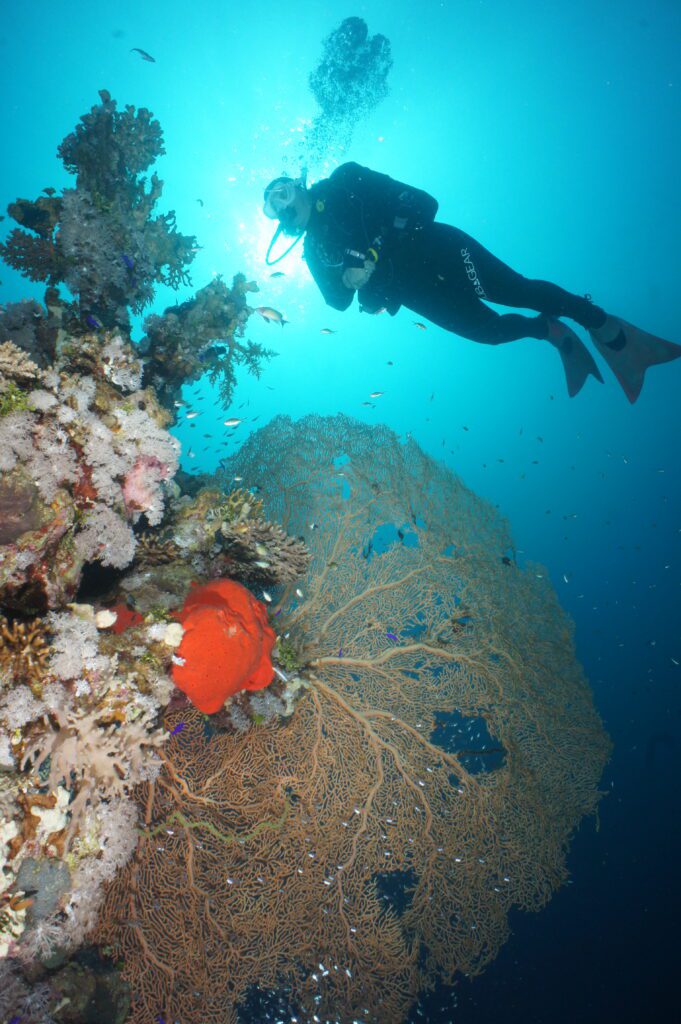Our panel of experts weigh in on the pivotal topic of weighting to enable correct buoyancy control and trim, and offer helpful advice to ensure that you can maximise in-water comfort while minimising gas consumption
Nothing beats the feeling of floating completely weightless in midwater. Once you master achieving and maintaining neutral buoyancy, your diving moves on to a whole new level. You are able to swim around effortlessly around obstacles; stop to watch or photograph marine life without having to move your arms and legs to hold your position; and hover at your safety stop looking like a boss.
Whether you dive dry, or in a wetsuit in warmer waters, getting your weighting right is one of the most important aspects of diving. Until you have your buoyancy control nailed, your diving cannot reach the level to which you aspire.
Get your trim just right
Martin Robson, PADI TecRec Instructor Trainer: “Take time out of a dive to check your weighting. Under water, have your buddy look at your trim and experiment in the shallows with changes in weight positions to get your trim just right. Over- or under-weighted can be anything from uncomfortable to dangerous, so take your time to get it right.”
John Kendall, GUE Instructor Trainer: “Getting your weighting right is a really important part of buoyancy control. It is often the case that beginner-divers are overweighted by their instructors to keep them down and make it easier to do drills, but this just starts a buoyancy problem that can go on for years if not corrected.
“Every 1kg of extra weight someone is wearing requires one litre of extra gas in their BC. Getting this extra gas out during an ascent can be difficult and will often lead to runaway ascents. Unfortunately, the normal response to this is to add more weight, rather than remove it.
“The best way of getting your weighting right is to get into shallow water with a cylinder that has only around 30-40 bar in it (don't worry, you're not going for a dive with it). Then dump all the gas out of both your BC and drysuit, and see if you sink.
“If you don’t, you need a little more lead. If you do sink, take a big breath in. If you can hold neutral buoyancy like this, your weighting is about right. If you‘re firmly stuck on the seabed, you have too much lead. Get rid of some of it and try again.
“Doing this will make your diving a lot more comfortable and enjoyable, and you’ll probably find that your gas-consumption goes down too.”
Weighting & buoyancy
Garry Dallas, Director of Training, RAID UK: “Weighting and buoyancy go very much hand in hand. Being correctly weighted gives divers much better buoyancy control.
“To achieve this, we have to consider the effects of weighting during positive, neutral and negative buoyancy: to float on the surface, hover easily in good profile / trim under water, and sink when we descend.
“Consider the elements affecting weighting: exposure suit, weight of equipment, water salinity, minimum gas needed in the cylinder(s), air in the BC and the diver‘s lungs, especially when anxious. Accessibility to dump weights is a requirement only for certain environments.
“There are various ways to achieve correct weighting, some more accurate than others, but they must always be done prior to any open-water dives in a controlled and safe environment. RAID advises that, wearing only your exposure suit (squeezing all the air from the drysuit, holding half your tidal volume) and a weight-belt, you establish the weight needed for the diver’s head to just breach the surface.
“Estimate the amount of lead to start, then add to it. Doing this without fins prevents offsetting the result by the diver inadvertently moving them, creating an upward motion. Ensure that the diver can sink by breathing out while looking upwards. This is weight ‘A’.
“Secondly, determine the weight of the equipment without air in the BC, 30 bar in cylinder(s) and empty counterlungs on a CCR unit. Secure a lift-bag to the equipment, adding air to the bag to make everything neutrally buoyant. Then, remove the bag carefully and add measured lead weights to make it neutrally buoyant again. This is weight ‘B’.
“For drysuit diving, weights are best positioned at the hips, not above the waist, to give the balanced profile / trim. For wetsuit diving, weights are generally best distributed above the hips.”
IANTD General Manager Tim Clements: “All divers aspire to that weightless astronaut feeling and it’s reassuring to know that it’s a fairly simple balance of physics to achieve. However, like all good humans, it’s possible to get in a bit of a pickle. Taking it all back to some very simple rules is essential to sorting out your weighting.
“Simply put, you and your thermal protection are buoyant – you need to add lead to counteract this. Where this lead goes is relevant because your ‘trim’ and stability will be affected. It’s worth understanding this early, because effort to maintain desired trim can be interpreted as not being heavy enough and lead to incorrect weighting.
“Start with a simple test, with just 50 bar in your cylinders. Stop finning! If you can stay at 5m or your shallowest stop with no gas in your wing and only a squeak of comfort gas in your suit, plus minimum loop on CCR, your weight is correct. You can move on to trim.
“If you find you are floating or sinking, make small adjustments until your weight is stable. Remember that if you have too much weight in a drysuit, you will balance that with too much gas in the suit and could feel unstable – some divers interpret this as being ‘floaty’ and add yet more lead…
“The same goes for CCR. Make sure you are on minimum loop, or you are merely compensating for gas that you don’t need, except this time your PO2 can become less stable and increase your O2 use. Mojo loss alert!
“Trim: whatever you want, you need to feel stable. Work out if you are tipping forwards, backwards, side to side and make any necessary changes. Move the weight you have, such as cylinders or lead. Go for a good swim to get used to and analyse how your changes are working.
“It’s easy to get so tied up with fiddling here – just go for a swim! Some divers hit this dead-on first time while others take a while to feel comfortable, so don’t be afraid to take the time you need to get your stability right before going for proper dives. Time spent understanding what you’re doing will be valuable in the long run.
“Lastly, keep your weighting under evaluation. We all develop as divers and you might find as seasons change or you dive better that, mysteriously, you need less weight. Enjoy your three dimensions.”
SSI referred to its Perfect Buoyancy course materials: “Your buoyancy is always changing because your volume is continually changing. One reason is because some of the equipment you wear – such as your exposure suit and BC – contain gas spaces that vary in volume as you descend (increasing pressure) and ascend (decreasing pressure).
“In addition, you displace slightly more or less water depending on whether you inhale (which expands your volume) or exhale (which decreases your volume).
“Your buoyancy control system allows you to adjust changes in buoyancy by adding or removing air to keep your displacement constant throughout the dive. Experienced divers know how important proper breathing (lung volume) and body position is to maintaining neutral buoyancy, and once you master perfect buoyancy, you will easily compensate for these continual changes in buoyancy.
“Starting your dive with the proper amount of weight is critical to your safety. Diving with too much weight will affect your trim in the water, causing you to be more vertical than horizontal. This position presents more swimming resistance, requiring you to use more energy (and air).
“It also makes it more likely that your fins will make contact with the seabed, decreasing the visibility and possibly damaging sensitive marine life such as coral.
“Although we don’t normally think about air having weight, it is another consideration in achieving perfect buoyancy. The air in question is the quantity contained within your dive-cylinder.
“For example, air weighs 1.293 grams per litre. The air in a 12-litre cylinder, filled to 200 bar, weighs 3.103kg. When the 12-litre cylinder (2,400 litres) reaches 50 bar, the air weighs 0.775kg. Though it might seem trivial, this weight must be considered to avoid being too positively buoyant at the end of a dive after most of your air has been used.
“Changes in equipment configuration might also have an effect on your buoyancy. These items include your exposure system, BC design, cylinders and additional equipment like lights, cameras and / or video systems, or diver propulsion vehicles.”
Vikki Batten, Director of Rebreather Technologies, Training Supervisor & Instructor Examiner at PADI: “It might take several dives in a new location or equipment to get your weighting right, so make a note of your equipment, location and the weight you use in your log book or calendar. Then, when you next wear the same kit in a similar location, you will have a much better starting point.”
Simple rule of thumb
Dave Lock, BSAC National Diving Committee adviser: “Correct weighting of a diver can mean the difference between a comfortable, effortless dive or misery with constant adjusting of buoyancy in the BC or drysuit.
“Many instructors overweight their students to make their life easier. This goes forward into divers thinking they need far more weight than they do. A simple rule of thumb is to start with 10% of body weight for UK sea diving (7% for fresh water) with an appropriate protective suit and single cylinder.
“This obviously will need adjusting for different types of suit, cylinder types and size plus body fat of the diver. You’ll need to get in the water to try this, and should be able to hold position at 3m with cylinders that are at reserve level.
“Having the correct weight for buoyancy is good practice, but correct weight alone does not always solve the problems of balance and control. Weight needs to be evenly distributed about the body so as to achieve optimum buoyancy for the type of diving to be undertaken.
“This is known as trim and can be achieved by moving the cylinder in the BC or moving the weight-belt to a better position on the diver’s body. If you have integral weights in your BC there are usually trim and weight-pockets higher up to allow for adjustment.
“You might also want to keep a record of the weight needed for neutral buoyancy for different kit configurations and protective suits. This will ensure that you can get effortless diving straight away when going on that holiday of a lifetime.”
Risk of rapid ascent
Mark Powell, Business Development Manager for TDI/SDI: “The first step to good buoyancy control is correct weighting. It is a fact that the majority of divers carry too much weight. This ranges from a couple of kilos to tens of kilos overweight. Again, this is not just restricted to novices. Experienced divers are often over-weighted, some to a remarkable extent.
“There are many reasons why divers dive over-weighted. Sometimes it stems right back to their initial training, where they are encouraged to start off with more weight than is needed so that during their confined water and initial open-water dives they can focus on skills such as mask-clearing and regulator recovery.
“Unfortunately, this has the effect of getting the student comfortable when they are negatively buoyant. In conjunction with this, trainee divers are often worried about the risk of a rapid ascent. They mistakenly add extra weight in an effort to ensure that they do not have a rapid ascent, without realising that by doing this they are actually increasing the risk rather than decreasing it.
“Open-water Instructors should always try to ensure that their students are correctly weighted and that they gain confidence in performing skills while neutrally buoyant. After all, it is very unlikely that problems are going to occur while a diver is kneeling on the bottom.”
“As divers progress and start to use a drysuit they might add on extra weight to compensate for the suit without checking to see exactly how much they need to add.
“They might also be advised to add ankle-weights to prevent floaty feet or inverted ascents. Often these ankle-weights are added without a corresponding amount of weight being removed from the weight-belt.”
“It is good practice for all divers, no matter how experienced, to do a buoyancy check at the start of each diving season, midway through the diving season, whenever they dive with a new or different kit configuration, if they haven’t dived for a while, or if they are diving in a different environment, for example moving from fresh to sea water, or vice versa.”
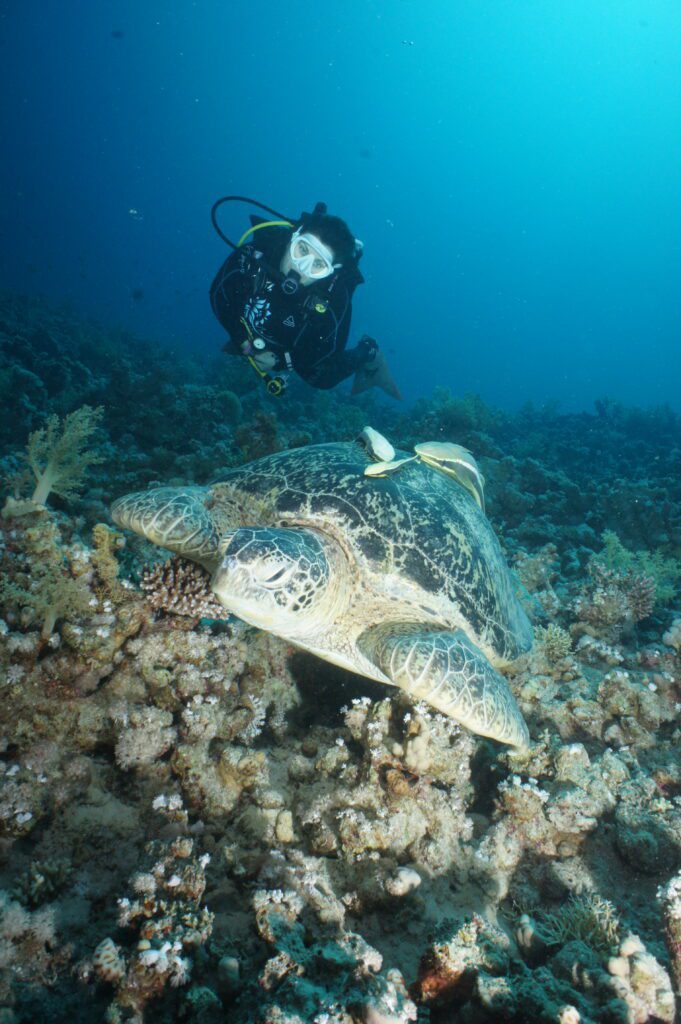
Emily Petley-Jones, UK Regional Training Consultant at PADI: “Don’t forget your buoyancy check! You should complete one: a) before every dive with different gear (including different cylinders, undersuits or wetsuits); b) on your first dive of a holiday; c) if you haven’t been diving for a while.
The few seconds it takes to check your weight at the beginning of the dive can mean that you get a longer dive, because you won’t be using up your air while you struggle with your buoyancy.”
Photographs by Mark Evans
Also on Divernet: Deploying A DSMB, Which Safety Gear To Carry, Buying Your Own Gear, Packing Gear For A Dive Trip, What To Check Before Diving, Night Diving, Developing Core Skills, Coldwater Diving, Caring For Diving Equipment
